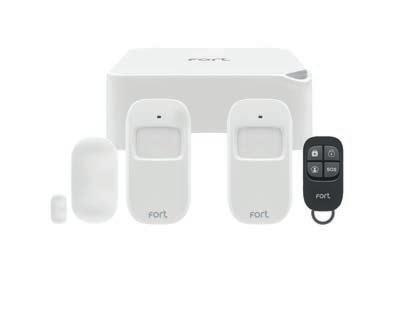
4 minute read
Sprinklers: the insider’s guide to safety, compliance and peace of mind
Sprinklers can and do save lives, protect our homes and safeguard our businesses and livelihoods across commercial premises. As the hidden hero of fire safety, sprinklers are at the heart of building infrastructure and a lifeline that we can trust to save the day in case of an emergency, protecting our stock, equipment, and most importantly, lives, writes Adrian Kay, Head of Technical Compliance and Quality at Johnson Controls UK&I.
Yet, all too often, ‘out of sight and out of mind’ rings true when it comes to ensuring best practice. Ensuring that your fire sprinkler system is up to standard is vital, but it can appear daunting. This guide simplifies the process for building owners and occupiers and system users, outlining best practice for reliability and maintenance.
Advertisement
The RRO Regulatory Reform (Fire Safety) Order 2005 placed the onus solely on the building owner or occupier. Now, every commercial or industrial property must have an individual responsible for fire safety and making their premises fire compliant. Failing to do so can result in fines, prosecution and even jail time.
However, all building stakeholders must work in sync on a building’s fire safety strategy for it to be effective. You may not have a facilities management company or may lack experience of this particular type of fire suppression system, so it is imperative that you find an accredited contractor that can support you.
Best practice for sprinkler maintenance starts with weekly or monthly checks in-house, with experts employed on a quarterly, six monthly or annual basis to ensure that systems are in good health. Think of your building like a car – you can assess the condition of your tyres before a long trip, or top up the screen wash, but you leave your annual MOT and service to the experts.
The big difference here is that no one talks about the requirements for your sprinkler maintenance, so you can feel left in the dark without clear guidance. It is the responsibility of the building owner or occupier to appoint a third-party accredited contractor that adheres to the standards outlined by the Fire Protection Association (FPA).
Once the service contract is in place, you must work together to build a compliant sprinkler care and maintenance regime, including regular hazard reviews, combining internal building understanding and external expert knowledge.
The biggest hurdle is making people more aware of what a compliant sprinkler system maintenance contract looks like, which is where documents like the FPA’s guide to Sprinkler System Service and Maintenance come into play.
It is important to choose a contractor that services to recognised standards and carries one of the industry-approved third-party certifications: LPS1048, FIRAS or IFC. The certification generally covers the design, installation, testing and commissioning of systems, but you need to ensure service and maintenance is incorporated. Do your research to ensure that you meet legislative requirements:
• Look for contractors with third-party accreditations (LPS1048, FIRAS or IFC) • Select a scheme that is regularly audited • Ensure you can receive ongoing service and maintenance, with a supplier that offers 24/7 rapid callouts to fix urgent issues • Beware of substantially lower costs – there is no guarantee that the cheapest option meets recognised compliance standards if they are not accredited
One size does not fit all, and each building’s sprinkler system is different dependent upon its occupation and the use and size of the space. Hybrid working has changed the way in which we interact with and use spaces, yet we are finding that many businesses neglect to update fire safety when they do so.
As people make changes to building use, the effectiveness of the sprinkler system is immediately affected. For instance, a partition wall may seem an easy solution to divide a space, but
One size does not fit all, and each building’s sprinkler system is different dependent upon its occupation and the use and size of the space
unknowingly it may affect the sprinkler system coverage, creating huge fire safety ramifications. For this reason, it is vital to carry out a regular Review of Hazard to assess the changing use of spaces. This is recognised within sprinkler standards as a critical routine to ensure compliance, with immediate remedial action a requirement if the review identifies deficiencies. The main purpose of a regular Review of Hazard is to identify deficiencies in your fire sprinkler system. These reviews highlight where manufacturing or office areas have been converted into warehousing, or where structural changes to the building, such as partition walls or mezzanines, have been added, affecting sprinkler system operation. Regular hazard reviews are an essential method to uncover blind spots and can be done internally on a quarterly basis with checklists provided by your contractor who will themselves also carry out a review on an annual basis and will step in when alterations to fire safety infrastructure are required.
If the sprinkler system is not subject to a compliant service and maintenance regime as required by the standards, there is a serious risk that the system may not operate as intended in a fire situation. Weekly and monthly checks by the system user, combined with provision of a service and maintenance contract with an accredited contractor are all critical in ensuring continued reliability.
Fire safety is a vital part of protecting your employees’ wellbeing and business interests. You must ensure that your sprinkler systems are fit for purpose and ready to operate, so that if disaster strikes, your fire suppression measures are up to task.
Johnson Controls, johnsoncontrols.com
SMART SECURITY PRODUCTS

Every device can be controlled from anywhere using the Click Smart+ app.

POWERED BY CLICK SMART+










